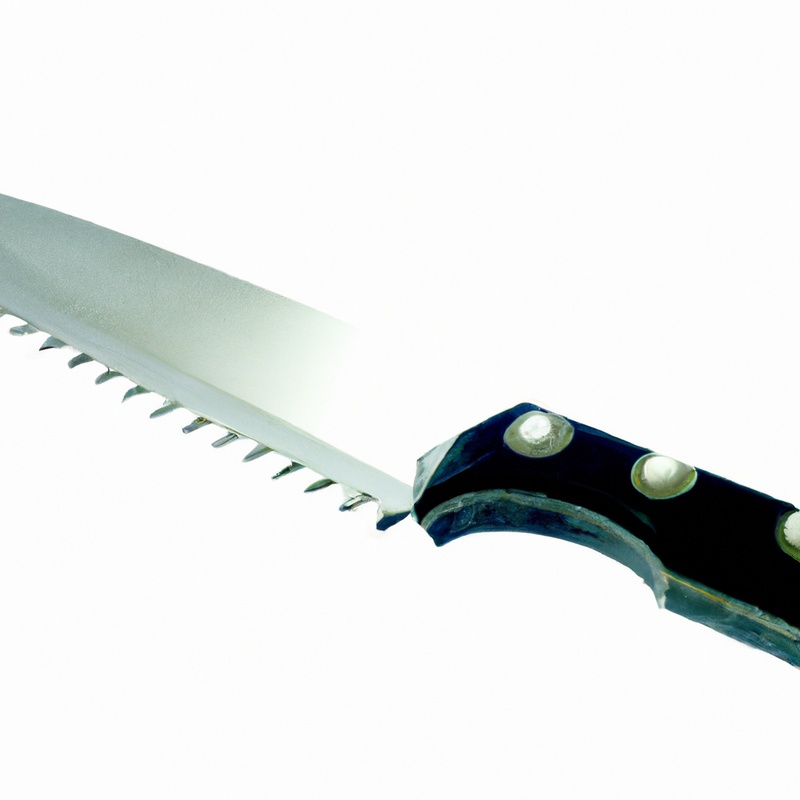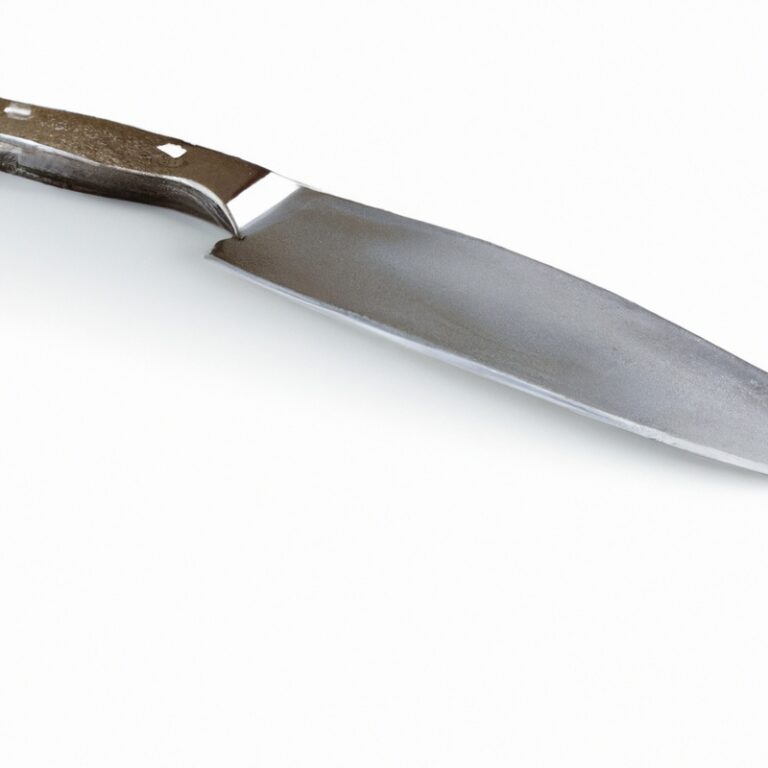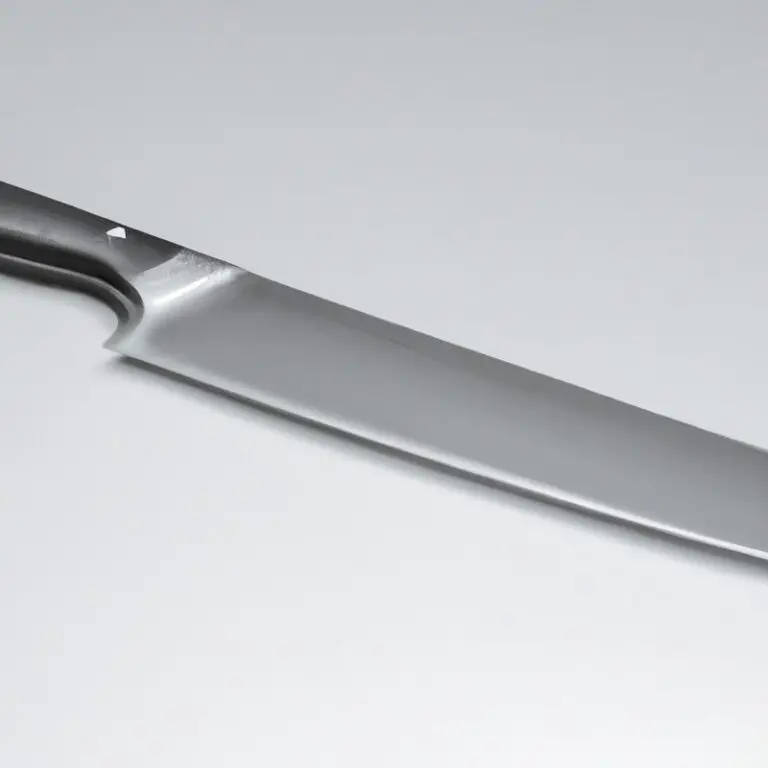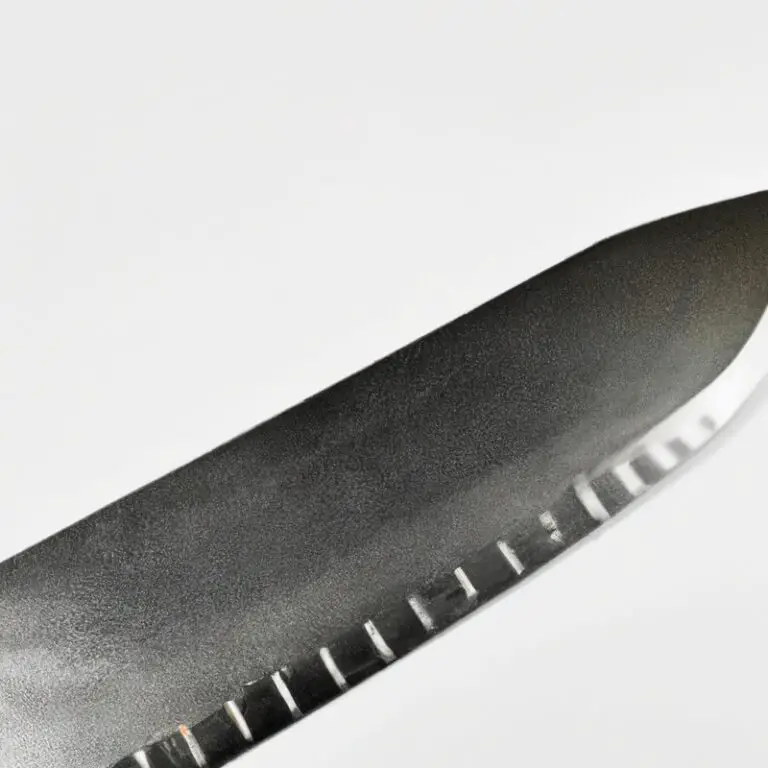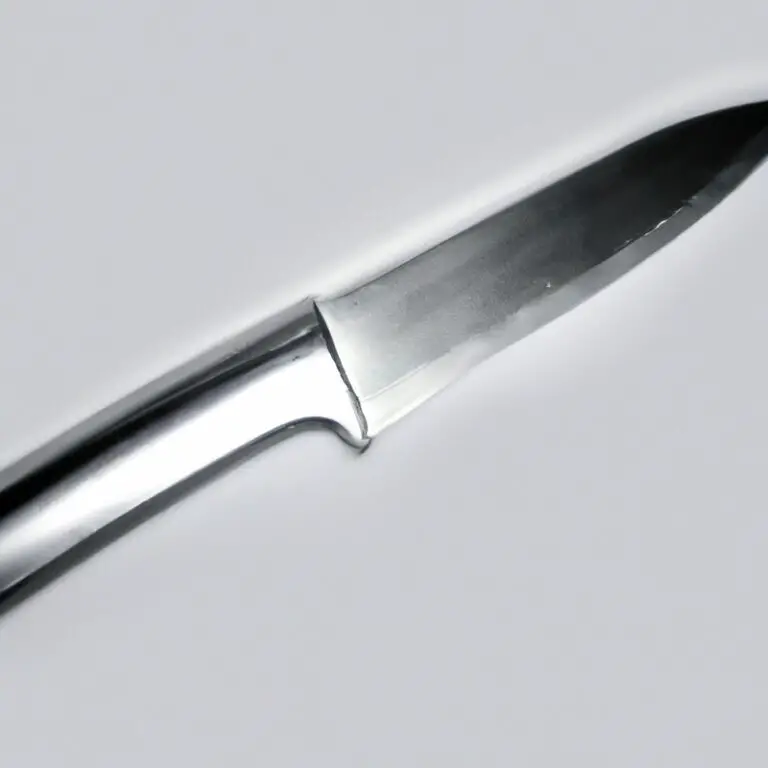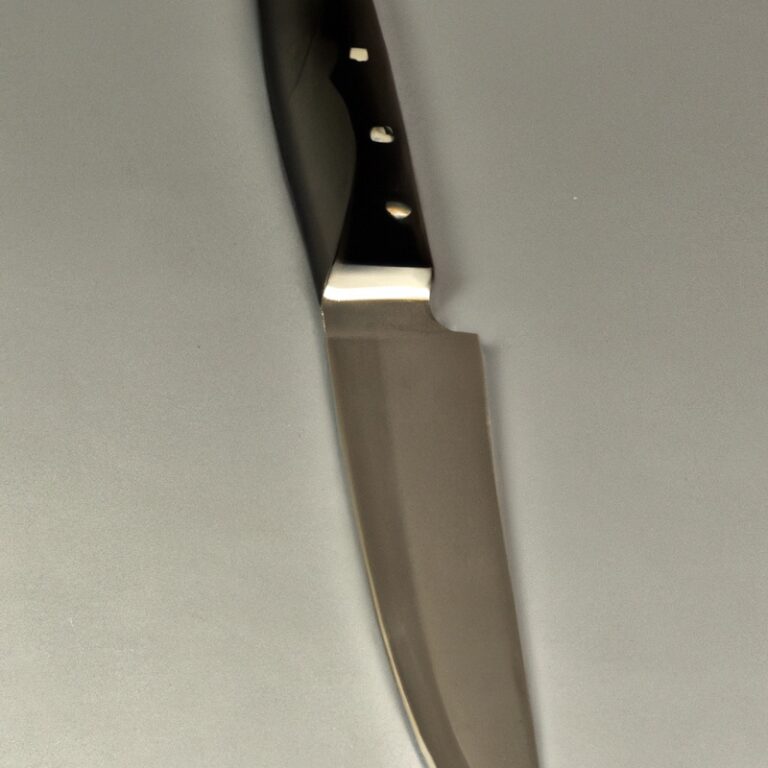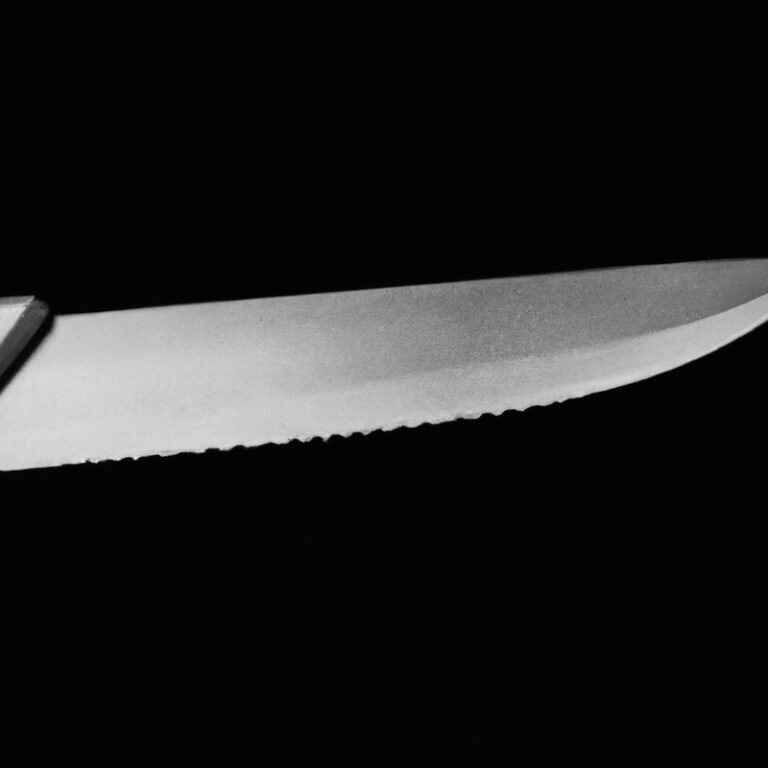How Can a Serrated Knife Help With Precision Tasks Like Slicing Through Cake Layers?
Key Takeaways:
- Serrated knives have small, jagged teeth that provide more control and stability while slicing through delicate cake layers.
- The saw-like action of a serrated knife helps prevent the cake layers from crumbing or squishing during the cutting process.
- Serrated knives are particularly useful for slicing through crusty or hard surfaces while maintaining a clean and even cut.
- The serrations on the blade create friction, making it easier to maintain a steady slice and reducing the risk of accidents.
Have you ever marveled at the perfectly even layers of a beautifully crafted cake? Ever wondered how professional bakers achieve such precision?
Well, allow me to let you in on a little secret: it’s all about the knife.
Specifically, the serrated knife. Yes, that jagged-edge wonder that effortlessly glides through delicate layers and leaves you with pristine slices every time.
In this article, I’ll dive into the world of serrated knives and explain how they work their magic on precision tasks like slicing through cake layers.
So grab a cupcake and get ready to be amazed!
| Serrated Knife | |
|---|---|
| Purpose | Designed specifically for slicing through soft foods like cakes without crushing or tearing |
| Blade Design | Has small, pointed teeth along the edge that grab and hold onto the food, providing better control and preventing the blade from slipping |
| Slicing Technique | The serrations and pointed teeth help to gently saw through the cake layers, creating clean, even slices |
| Less Pressure | Requires less force to slice through compared to a non-serrated knife, reducing the risk of ruining the cake |
| Diversity | Can be used for various precision tasks besides slicing cakes, such as cutting bread, tomatoes, and delicate fruits without damaging their structure |
What is a serrated knife?
Definition of a serrated knife
A serrated knife is a type of knife with a saw-like, jagged edge. The word “serrated” refers to the sharp teeth or points along the edge of the blade.
These teeth allow the knife to grip and cut through tough or slippery surfaces more effectively.
Serrated knives are commonly used for slicing bread, cakes, and other delicate foods without crushing or tearing them. The unique design of a serrated knife makes it particularly useful for precision tasks that require clean and even cuts.
Types of serrated knives
There are several types of serrated knives available, each designed for specific tasks. Here are some common types:
- Bread Knife: This knife has a long, serrated blade that easily cuts through crusty bread without crushing it. It’s also great for slicing tomatoes and other delicate fruits.
- Steak Knife: With a sharp, serrated edge, this knife is perfect for cutting through thick cuts of meat, such as steak. It ensures clean, precise cuts without tearing the meat.
- Tomato Knife: As the name suggests, this knife is ideal for slicing tomatoes. Its serrations grip the smooth skin, preventing the knife from slipping and allowing for smooth, even slices.
- Cake Knife: A serrated cake knife is specially designed to cut through layers of cake. The serrations neatly glide through the soft texture, creating clean edges.
These are just a few examples of the types of serrated knives available. Each one serves a different purpose, so it’s important to choose the right knife for the task at hand.
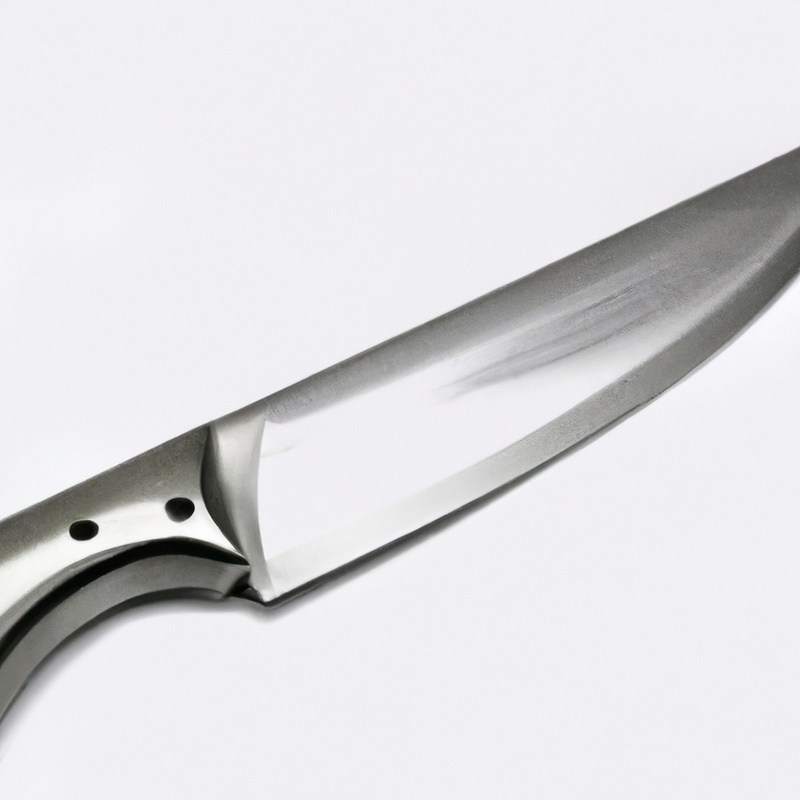
How does a serrated knife work?
The serrated edge
The serrated edge of a knife refers to the small, jagged teeth along the blade. These teeth create points of contact with the material being cut, allowing for better grip and control.
When slicing through tough or delicate foods, the serrations help to grip the surface and prevent slipping.
The sharp points of the teeth also facilitate the cutting action by tearing through the material, creating cleaner and smoother cuts. The serrated edge is particularly effective for precision tasks like slicing through cake layers or cutting through crusty bread.
Why is a serrated knife effective for precision tasks?
A serrated knife is effective for precision tasks because of its unique design. The serrated edge features small, jagged teeth that grip and cut through tough foods with ease.
This makes it perfect for slicing through delicate cake layers without crushing them.
Additionally, the saw-like action of the serrated edge helps to prevent tearing and creates clean, even slices. Whether you’re cutting through bread, pastries, or carving meats with bones, a serrated knife provides the control and accuracy needed for precision tasks.
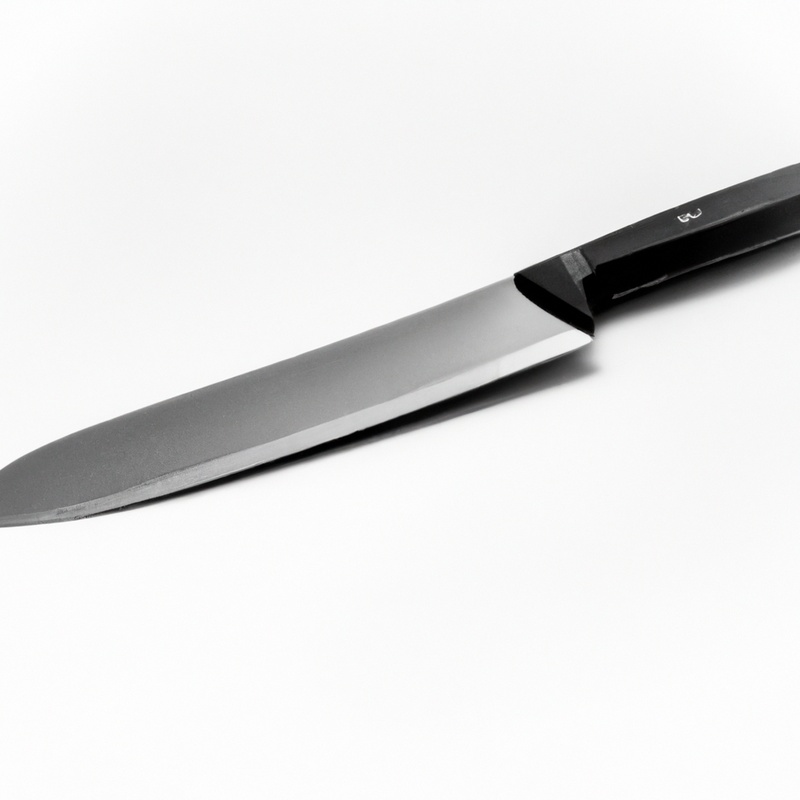
Precision tasks that require a serrated knife
Slicing through cake layers
When it comes to slicing through cake layers, a serrated knife is a game-changer. The tiny, pointed teeth on the blade make it easy to cut through soft, delicate cake without squishing or tearing it apart.
The serrations grip the cake, allowing for smooth, even slices.
It’s important to use a gentle sawing motion and let the knife do the work, rather than applying too much pressure. With a serrated knife, you’ll create beautiful cake layers that are perfect for filling and decorating.
Cutting through delicate breads or pastries
Cutting through delicate breads or pastries can be tricky, but a serrated knife makes it much easier. The sharp, saw-like teeth on the blade grip onto the bread or pastry, allowing for clean, even cuts without crushing or tearing the delicate texture.
Whether you’re slicing through a soft baguette or a flaky croissant, a serrated knife ensures precision and preserves the integrity of your baked goods.
Just make sure to use a gentle sawing motion while applying light pressure to achieve the best results.
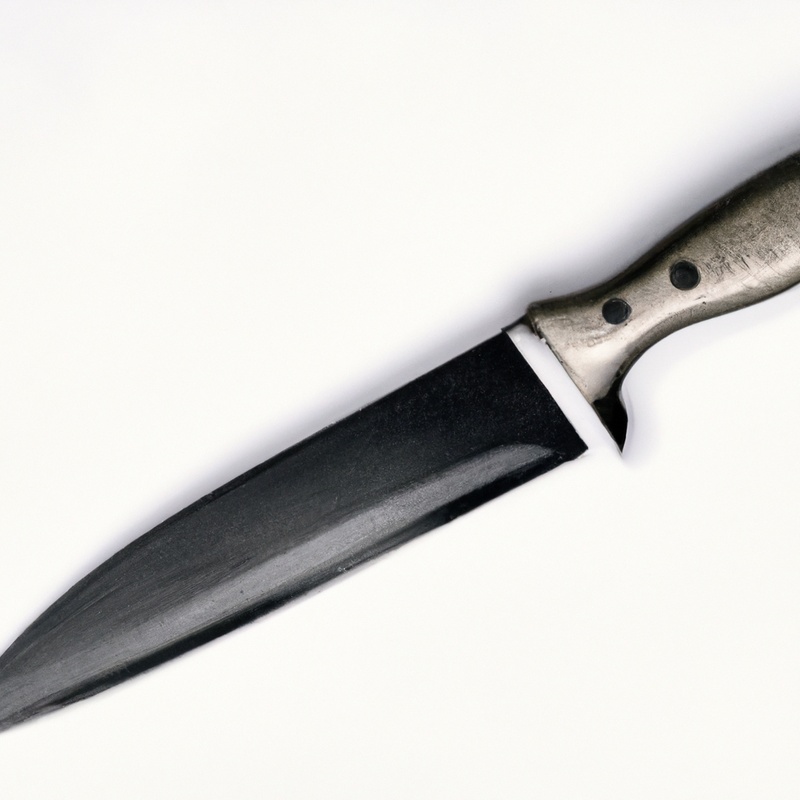
Carving meats with bones
When it comes to carving meats with bones, a serrated knife is the go-to tool. The sharp, jagged edges of a serrated knife make it easier to slice through tough cuts of meat and navigate around bones.
The serrations grip onto the surface of the meat, allowing for precise cutting without slipping.
This ensures clean and even slices, minimizing the risk of tearing or crushing the meat. So, if you’re looking to carve a juicy steak or a roasted poultry with ease, a serrated knife is your perfect companion.
Tips for using a serrated knife for precision tasks
Choosing the right knife for the task
When it comes to choosing the right knife for the task, there are a few factors to consider. First, think about the type of cutting you’ll be doing.
For precision tasks like slicing through cake layers, a serrated knife is ideal.
It provides a clean and even cut without crushing or tearing the delicate layers. Additionally, consider the size and weight of the knife.
For more control, opt for a knife with a comfortable handle and a blade length that suits the task.
Lastly, ensure that the knife is sharp and well-maintained to achieve the best results.
Proper gripping and handling techniques
When it comes to proper gripping and handling techniques for a serrated knife, there are a few key tips to keep in mind. First, make sure to firmly grip the handle of the knife, using all of your fingers for stability.
This will help you maintain control while cutting.
Second, apply gentle pressure and let the serrated edge do the work. Avoid forcing the knife through the material, as this can lead to accidents or inconsistent cuts.
Finally, be mindful of your hand placement and keep your fingers away from the blade to prevent any potential injuries.
Following these techniques will ensure safe and precise slicing with a serrated knife.
Maintaining the serrated edge for longevity
To maintain the serrated edge of your knife for longevity, there are a few simple steps you can follow. First, always hand wash your serrated knife instead of putting it in the dishwasher.
The harsh detergent and high heat can damage the delicate serrations.
Second, avoid cutting on hard surfaces like glass or metal, as this can dull the edge. Instead, use a cutting board made of wood or plastic.
Lastly, regularly sharpen your serrated knife with a specialized serrated knife sharpener or a sharpening rod designed for serrated blades.
This will help restore the sharpness of the serrations and prolong the life of your knife.
Benefits of using a serrated knife for precision tasks
Clean and even slices
Clean and even slices are one of the key benefits of using a serrated knife for precision tasks. The serrated teeth along the blade grip the food’s surface, allowing for a controlled and precise cut.
Unlike a straight-edge knife, the serrated knife’s teeth provide stability and prevent the blade from slipping or sliding, resulting in clean and even slices.
Whether you’re slicing through cakes, breads, or delicate pastries, a serrated knife ensures that each slice is uniform and visually appealing. Its unique design also reduces the likelihood of crushing or tearing the food, making it ideal for achieving professional-looking results.
Reduced likelihood of crushing or tearing
A serrated knife can significantly reduce the likelihood of crushing or tearing when performing precision tasks. The teeth along the blade make it easier to cut through tough exteriors without applying excessive pressure, which can lead to uneven slices or damage to delicate items.
The saw-like action of the serrations grips the surface being cut, allowing for a more controlled and precise cutting motion.
This makes the serrated knife especially useful when slicing through crusty bread, delicate cakes, or tender pastries. With a serrated knife, you can achieve clean and neat cuts without worrying about damaging your ingredients.
Versatility and multi-purpose use
A serrated knife is incredibly versatile and can be used for a variety of tasks in the kitchen. Its unique toothed edge allows for precise cutting and slicing, making it perfect for not only bread and pastries, but also for fruits and vegetables.
Whether you need to slice through a tough crust or tackle a soft tomato, a serrated knife is up to the task.
It is truly a multi-purpose tool that every home cook should have in their arsenal.
Final Verdict
A serrated knife is an indispensable tool when it comes to precision tasks like slicing through cake layers. Its unique design with a serrated edge allows for clean and even slices without crushing or tearing delicate layers.
By choosing the right knife, utilizing proper gripping techniques, and maintaining the sharpness of the serrated edge, you can ensure the longevity and effectiveness of your serrated knife.
With its versatility and multi-purpose use, a serrated knife is a must-have for any kitchen. So why settle for less?
Invest in a high-quality serrated knife and elevate your precision tasks to new heights.

